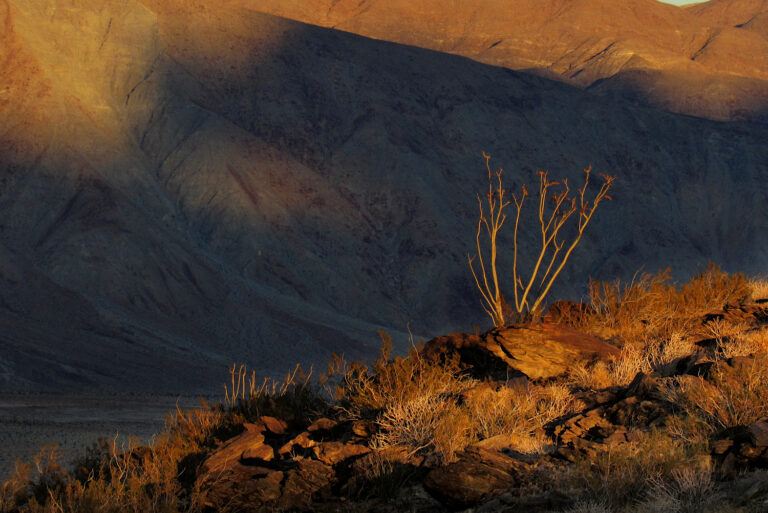According to a new study by scientists at the University of California, Irvine, climate change is altering the number of plants populating the region’s deserts and mountains.
Using data from NASA’s Landsat satellite mission and focusing on an area of nearly 5,000 square miles surrounding Anza-Borrego Desert State Park, the research team found that between 1984 and 2017, vegetation cover in desert ecosystems decreased overall by about 35%, with mountains seeing a 13% vegetation decline.
“Plants are dying, and nothing’s replacing them,” said Stijn Hantson, a project scientist in UCI’s Department of Earth System Science and lead author of the study. “It looks to be a striking loss for shrubs.”
The work encompassed swaths of the Sonoran Desert, including Anza-Borrego Desert State Park, where plants such as creosote bush, yucca, ocotillo and mesquite grow.
According to the researchers, the reduction of vegetation cover in deserts is the result of considerable year-to-year variability in rainfall in conjunction with climbing temperatures associated with anthropogenic climate change.
The team’s findings corroborate those of previous field studies in which different groups documented drought-related die-offs of dryland plants in the southwest, with some species completely disappearing from their habitat.
The situation in mountains where pines and oaks grow is less stark, which the researchers attribute to more rain. The Santa Rosa Mountains, for example, see an average of 770mm of precipitation a year, while regional deserts experience as little as 73mm annually.
Landsat satellite imagery, Hantson explained, is ideal for gauging vegetation cover shifts because it supplies spectral data for surface areas of about 90m2 – fine enough to track changing spectral signal patterns across large study areas. The data provides a sense of how ‘green’ a landscape is and helped the UCI team discern shifts across the study’s 34-year time window.
Long-term plant monitoring is now underway in Anza-Borrego so that researchers can see what happens to vegetation cover as the years unfold, as changes in plant communities can affect many things, from how well soils retain water to how much food there is for desert animals.



